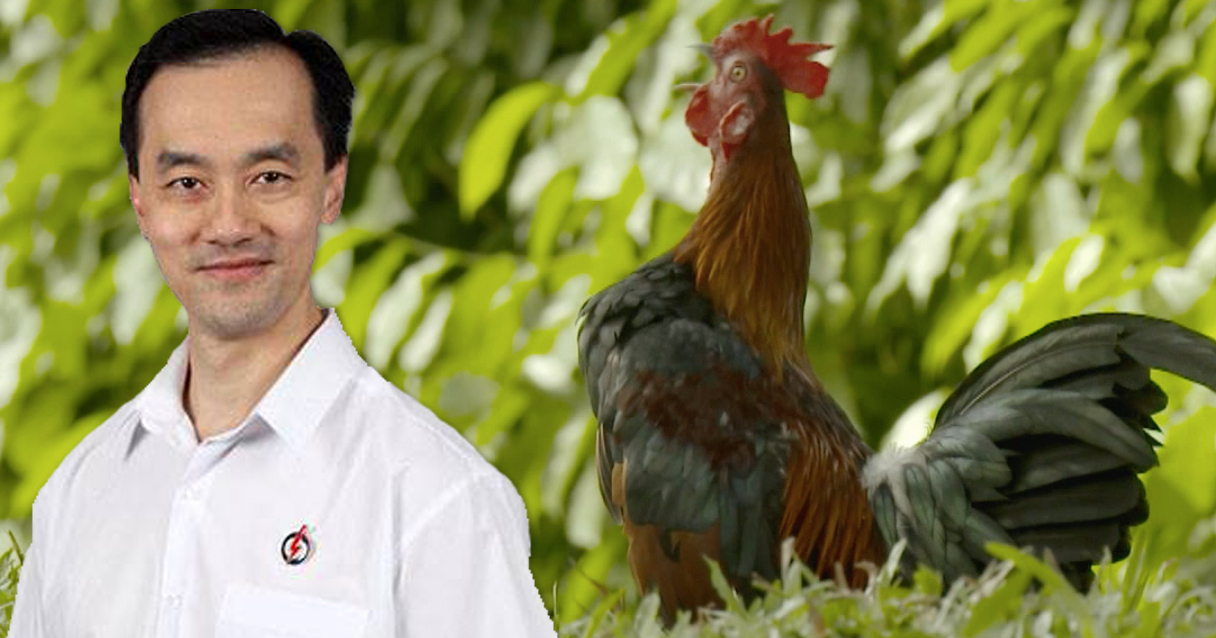On Monday in Parliament, Minister of State for National Development Koh Poh Koon spoke on the issue of free-ranging chicken-culling in Sin Ming — a topic that the Agri-food and Veterinary Authority (AVA) has objectively bungled in the eyes of the public.
Here's a summary of five key points he made:
1. The AVA found that the population of chickens in Sin Ming had more than doubled from about 20 over the last two years to 50 birds.
2. Studies show that there's clear evidence that bird flu can be transmitted between infected chickens and humans. Hence, AVA felt the need to take action.
3. AVA's actions were perceived to be motivated purely by noise concerns, which isn't the case. Koh admitted that AVA could have better managed its communications and engagement with stakeholders.
4. The chickens in Sin Ming are "highly unlikely" to be native, and are "therefore different" from the red junglefowl, "known to occur only" in Pulau Ubin and the Western Catchment area. Hence, moving these chickens to Pulau Ubin would result in inter-breeding and threatening of the genetic stock of the endangered native species.
5. AVA is working with academics, wildlife experts and other public agencies to find the best ways to manage the populations of free-ranging chickens. They also "will involve" the community and animal welfare groups in exploring various approaches, with culling done "as a last resort".
The English mainstream media reported on his remarks, and the exchange that followed.
Here's the info we gleaned from that:
- CNA: AVA received complaints about the fowl from three people in 2014, five in 2015 and 13 in 2016. The higher number of people complaining "clearly correlates" to the increased sighting of birds, Koh said.
- ST: Nee Soon MP and wildlife society ACRES founder Louis Ng called Koh out for incorrectly claiming that red junglefowl are only found at Pulau Ubin and the Western Catchment area, to which Koh responded genetic studies would have to be made to determine the veracity of this.
Now that it's been laid out, we'd like to raise three problematic things Koh said:
1) Saying that the rising number of complaints on the chickens (from three, to five, and finally 13) "clearly correlates" to the increased sighting of birds.
That adds up to 21 complaints over the past three years. The Sin Ming area, in comparison — HDBs, private housing and condominiums inclusive — has hundreds of residents, possibly thousands. Even if you narrow it down to the area where the 20-plus chickens were caught and killed — three HDB blocks — that's still several hundred people minimum.
Koh has already said the AVA has found that the bird population did increase from "about 20" in 2014 to 50 in 2016. Why the need to relate the number of complaints to the increase in the number of chickens? An increase in the number of complaints can also be due to the increase in the number of residents. Or any of a host of other factors, really.
Drawing such a tenuous link between these weakens an otherwise perfectly-sensible statistic about the wild chicken population.
2) Declaring, without a shred of evidence, that the chickens in Sin Ming were "highly unlikely" to be native, and then concluding that they are "different" from the red junglefowl. And then saying the red junglefowl are only native to Pulau Ubin and the Western Catchment area.
This, in fact, has already been debunked. We're happy to show you some screenshots from Wild City, a documentary narrated by David Attenborough, on the wildlife found here:
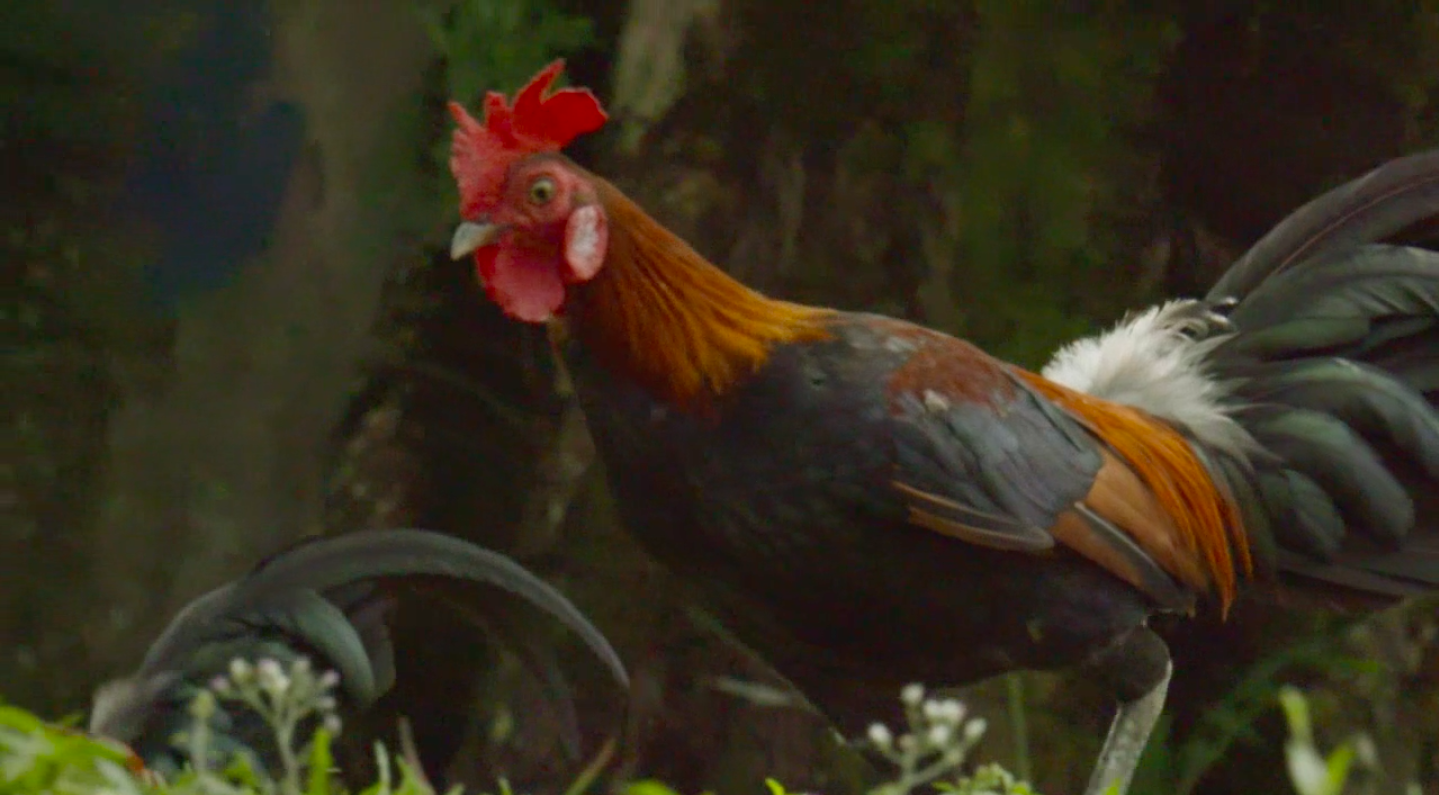 "Hi, I'm a red junglefowl and I live in Sin Ming." Screenshot from documentary
"Hi, I'm a red junglefowl and I live in Sin Ming." Screenshot from documentary
See his legs? They're grey.
And all these guys:
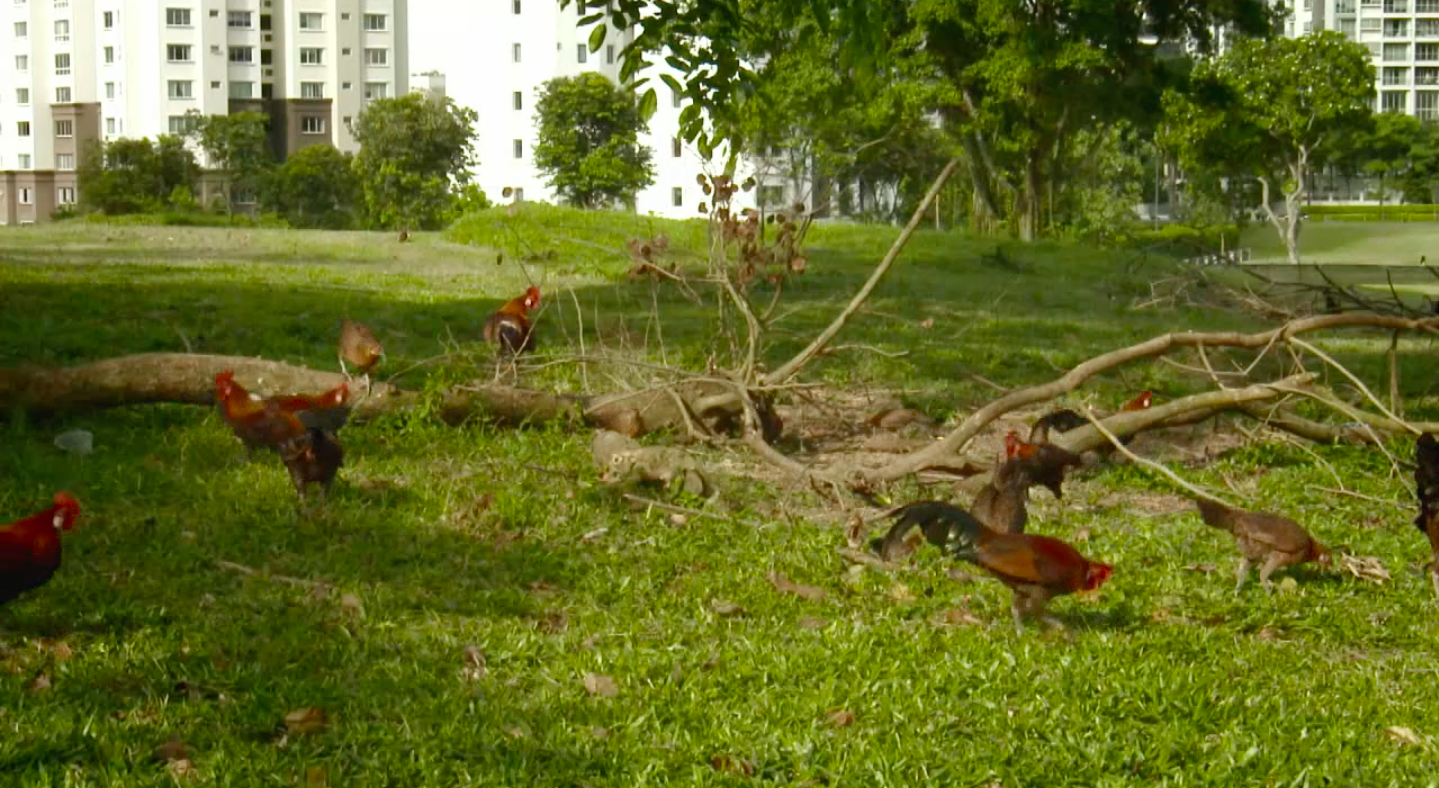 Screenshot from documentary
Screenshot from documentary
Pretty darn grey, too.
The documentary also shows scenes of them walking in front of the entrance to the Thomson View condominium. There is also a shot of a large signboard, which, to us, looks like it is located in Thomson-Sin Ming:
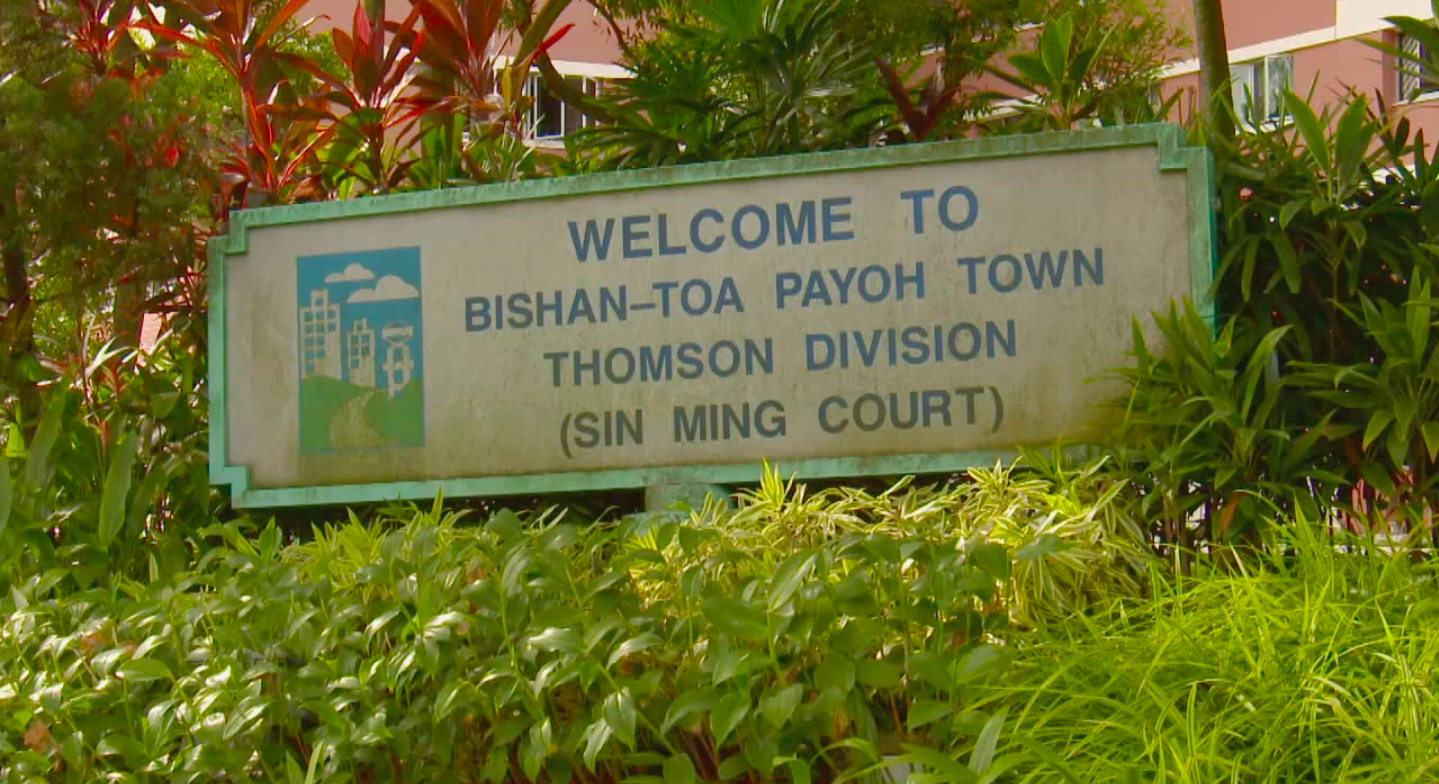 Screenshot from documentary
Screenshot from documentary
Last we checked, the Thomson/Sin Ming area isn't anywhere near Pulau Ubin or in the Western Catchment area of Singapore.
For the avoidance of doubt, everyone:
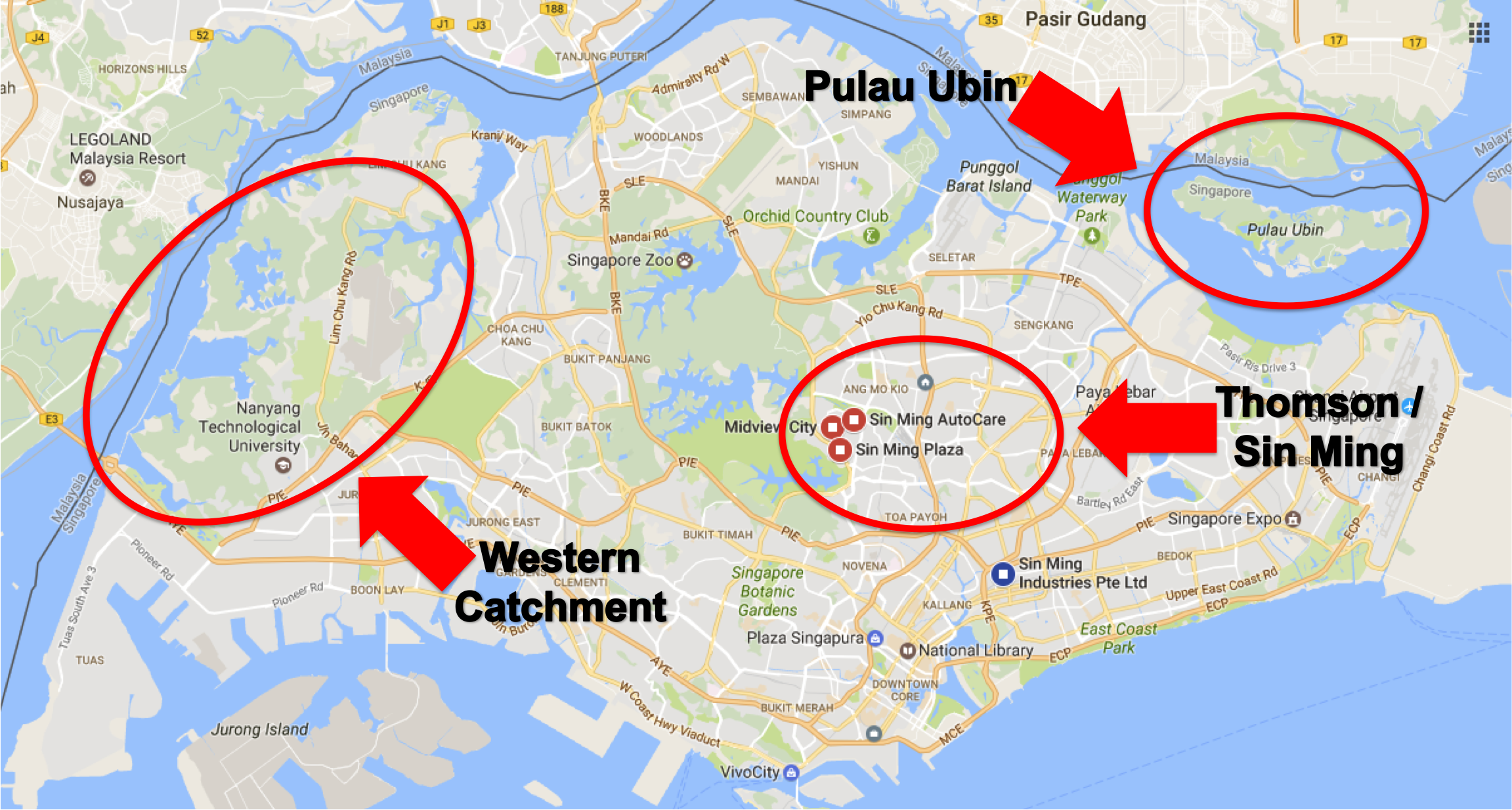 Source: Google Maps. Circles, arrows and labels added by us.
Source: Google Maps. Circles, arrows and labels added by us.
Why did he bring up this inaccuracy again? Even Ng pointed this out, reported in ST:
Ng: "I have seen the photos of the chickens or some of them at Sin Ming, they are indeed the red jungle fowl. There are two birds there, the domestic chickens and the red jungle fowl. Just to clarify because AVA had mentioned earlier that the free ranging chickens seen on mainland Singapore are not the red jungle fowl. That statement is inaccurate."
The best Koh could manage in the face of these facts:
Koh: "As to whether the birds that were running around are the red jungle fowl or just the foreign species, I think AVA will have to conduct genetic studies to determine or maybe get the experts to ascertain. So I think this is the point that is difficult for us to ascertain the truth just by speaking like this in this House."
This, despite the National Parks Board saying clearly that they are easy to distinguish — purebred red junglefowl have grey legs, while other chickens mostly have yellow legs. Female red junglefowl have no red combs as opposed to other chickens. Here are the females appearing in Wild City:
 Screenshot from documentary
Screenshot from documentary
They sure don't appear to have red combs. But certainly, AVA, feel free to conduct genetic studies on them to be absolutely sure. We're looking forward to your findings.
3) Saying that culling is a last resort action on the part of the AVA.
All things considered, this is a good thing to know.
We're glad to hear that the AVA wants to work with academics, wildlife experts, animal welfare groups, the community, whoever -- but where was the consultation earlier this month, when news first broke of their culling the more than 20 chickens?
In fact, this entire furore started because they culled the chickens without consulting with anyone — and simply in response to the 21 complaints (mostly about noise, it was even reported) that they received over three years.
The way Koh started his response on the issue should be an indicator:
"AVA is the designated government agency that responds to all public complaints about animals."
We also know very well the AVA has culled various animals in response to complaints over the years — cats, dogs, macaques, and now these, just to name a few. We hope this signals a change in how they go about deciding what to do with people who complain about animals being a nuisance to them.
Now, all that said, we think this all happened particularly because of poor communication, which even Koh admitted to in his response in Parliament. So...
If the issue was the concern of spreading bird flu, say so from the beginning.
The AVA explained their decision to kill the chickens first as responding to the 21 complaints of noise caused by them, then by expressing a concern that the non-native chicken breeds will cross-breed and dilute the genetic stock of the purebred red junglefowl, and then finally bringing in the possibility of the chickens spreading bird flu to humans because there are more of them now.
That's three different reasons, explained at three different stages.
Which is it? Koh said it was regrettable that people misunderstood the AVA's motivations to be responding to petty complaints about noise. And sure enough, this was the first thing that was reported:
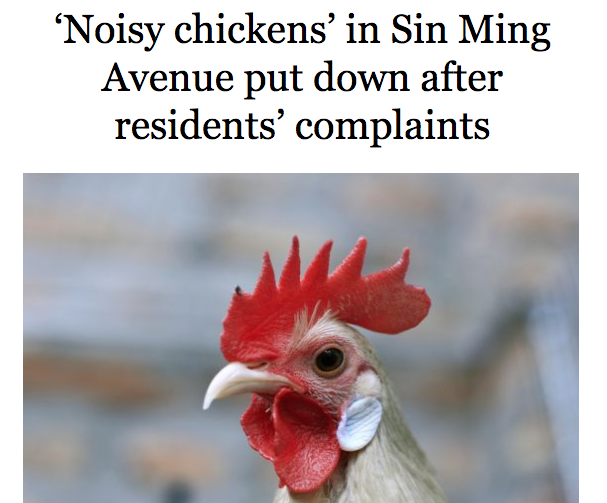 Screenshot from TODAY news story
Screenshot from TODAY news story
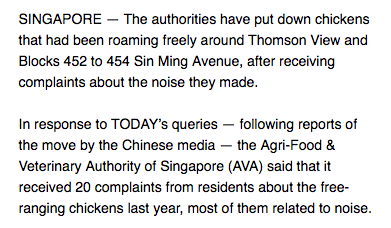 Screenshot from TODAY news story
Screenshot from TODAY news story
And in The Straits Times:
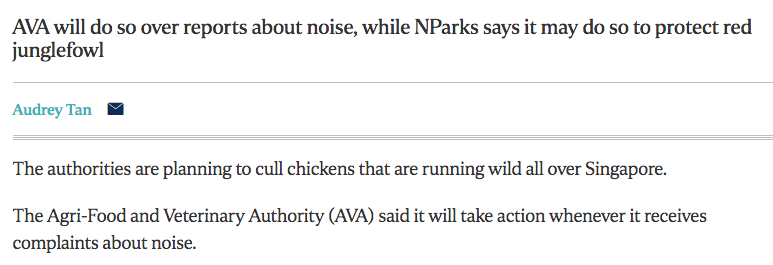 Screenshot from ST story
Screenshot from ST story
So if it's about public health and safety, why didn't the AVA come forward with that as the primary reason, instead of sharing they had received complaints about noise from residents?
If the public were first told that the H5N1 bird flu strain is still active and that chickens are particularly vulnerable to contracting and transmitting it to humans through touch, water droplets or even through the air from close contact, they would likely have been more understanding, especially if AVA had reached this decision to cull after consulting with wildlife experts, academics and animal welfare groups.
And here's another thought: if the primary concern is the health risk of transmitting bird flu, why distinguish between "foreign" chickens and the red junglefowl, if they all have the same risk of carrying bird flu?
If the red junglefowl transmit bird flu to humans, what will be done then?
In conclusion — How did the AVA royally screw up? Let me count the ways:
- AVA was inconsistent with their reasons given for culling the chickens. And we still do not know which of the three is the true reason why the chickens were culled.
- Quite clearly, AVA did not consult any stakeholders when they decided to cull the chickens.
- The AVA still had the cheek to blame the media for the public's wrong perception, but did not take that opportunity to explain clearly in its press releases or forum letters by debunking their own earlier statements.
And here's the cherry on top:
- Not only did they not apologise for their epic failure; they also needed an office-holder to admit that communications "could have been better managed".
We can only wait and hope that the AVA will sort this out -- it's too late for the chickens who have died, but perhaps we can save what's remaining of our red junglefowl from residents who complain about their noise.
Through science, logic and facts. With consultation.
Top photo adapted from screenshot from Wild City documentary
If you like what you read, follow us on Facebook, Instagram, Twitter and Telegram to get the latest updates.
